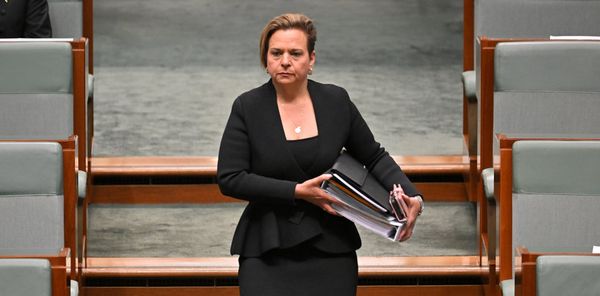
The number of Australians enrolled in bachelor degrees has fallen 12% in less than a decade, as experts warn the cost of living crisis may be affecting decisions and ambitious targets to ramp up university enrolments will not be met.
Some 815,700 people were enrolled in bachelor degrees in 2022, compared with 934,700 in 2016.
Conversely, the number of people enrolled in postgraduate degrees increased over the same time period. In 2022, 311,500 were enrolled in a postgraduate degrees, compared with 269,600 in 2016. Enrolments in graduate diplomas and certificates also experienced a minor increase from 2016 (83,300 compared with 85,700 in 2022).
Between 2016 and 2022, overall enrolments in the higher education sector have dropped by 4% (1.32m compared with 1.27m).
The dwindling enrolment rates come as the Universities Accord interim report estimates that, by 2050, about 55% of jobs will require higher education qualifications.
The latest data released by the Australian Bureau of Statistics this month showed 32% of Australians held a bachelor’s degree in 2022, rising to 45% among 25 to 34-year-olds.
The education minister, Jason Clare, said “we need more young people going to university or Tafe”.
“At the moment, almost one in two Australians in their late 20s have a university degree,” he said. “But not everywhere. Not in the regions. Not in poor families.
“The final report will identify the top priorities to make sure more young people get a crack at going to university.”
Andrew Norton, a professor in higher education policy at Australian National University , said the number of domestic Australian students enrolling was likely to be lower, as ABS data included international students, who rebounded this year after a Covid slump.
He said current rates had Australia “well short” of the 55% attainment rate by 2050.
Norton pointed to early university data which also showed domestic enrolments declining, with Universities Admissions Centre (UAC) figures suggesting there was a lower percentage of year 12s applying to attend university in 2024.
“[Students are] starting later, there’s patterns of deferral,” Norton said. “[Domestic enrolments] are stable at absolute best … we’d need a rapid acceleration of participation rates to make [the target] plausible.”
At the same time, Norton questioned why the federal government was touting the 55% figure in the first place, adding it was “based on a consultant’s report” and “wasn’t credible” to assume policy experts knew what the job market would look like in 2050.
“We need systems to meet demand if it emerges, without pressuring people to enrol,” he said.
On a global scale, the number of Australians with tertiary education sits slightly below the OECD average.
Melbourne University’s latest Taking the Pulse of the Nation report, released in late October, found financial barriers were the greatest obstruction to young Australians pursuing higher education.
Almost 60% of respondents said expensive tuition fees were deterring people from university study, followed by doubts university led to a better job and reluctance to take on student loans (52%).
Lead author Dr Nicolás Salamanca said there was a perception among Australians that university was hugely expensive despite Hecs/Help fees not being paid off immediately.
“It’s debt aversion – people fear it,” he said. “What surprised me is there’s a large share of people that think university doesn’t lead to a better job – and jobs that don’t require a degree here are well regarded.
“University attendance isn’t a space of indefinite growth. We just need more context to know if we should be worried.”
The deputy dean in the faculty of education at Monash University, Prof Lucas Walsh, said early trends since the pandemic suggested young people were bearing the brunt of the cost of living crisis, which may be dissuading them from carrying debts.
Its annual Australian Youth Barometer, released on Monday, found nine in 10 young people had experienced financial stress in the past year and just over half agreed education had prepared them for the future.
“We have a changing labour market, volatile wider economy … you can’t underestimate cost of living pressures – it’s going to affect decisions,” he said.
“It’s also coming amid a slow decline in year 12 equivalent completion – young people are working more and in multiple jobs but less inclined towards formal education.”
But the barometer also found 71% had taken part in non-tertiary training.
Walsh said this may be tied to the trend towards casualisation and part-time work, leading young people to train for “side hustles”.
“Fifty per cent of respondents had participated in the gig economy,” he said. “It might be linear pathways through education are a thing of the past.
“We don’t know what the market will look like in five or 10 years, such is the pace of change. But economic impacts can last up to 10 years. Something seismic has shifted, and decisions made now could have long term implications for young people.”







